
Nick Brandt, photography.
“To die, to sleep; To sleep, perchance to dream.”
Shakespeare, Hamlet.
“The white expressionless mask is closest of all to the figure of death; but amazingly this is the most expressive mask of all. To the same degree the death mask has the most vitality of all.”
Emilia Perroni
“The causal relation between the determining psychical trauma and
the hysterical phenomenon is not of a kind implying that the trauma
merely acts like an agent provocateur in releasing the symptom, which
thereafter leads an independent existence. We must presume rather
that the psychical trauma – or more precisely the memory of the
trauma – acts like a foreign body which long after its entry must
continue to be regarded as an agent that is still at work.”
Sigmund Freud
“On the day when crime puts on the apparel of innocence, through a curious reversal peculiar to our age, it is innocence that is called on to justify itself”.
Albert Camus
It is hard to escape the feeling of morbidity at work in the contesting of the U.S. presidential election at work today. And as its a week before Christmas, both the ironies mount up as well as the complexities of the narrative being told. The manufactured narrative and the public responses. Freud’s ideas on a Death Drive have been his least accepted ones. The avoidance of tensions and how that might play a large part in how our psyche is managed is simply sort of erased. It is rarely discussed in much depth, but rather dismissed in a sort of off handed manner. The precursors to the Death Drive in Freud have mostly to do with early notions of *binding*. And this in turn leads to what I think is one of his most important ideas, that of repetition. But as Samuel Weber points out, it is repetition which forces Freud ‘beyond the pleasure principle’. For everything then points backward to something anterior, something before binding, and not just chronologically. And it was Lacan who most clearly saw that this anterior realm was not a foundation but an abyss (and I think it was Deleuze who used that word). In any event, Weber notes Deleuze’s interest in this idea and in the transcendental character of it. All of this is inextricably bound up with Narcissism. And that in turn, at least in one branch of psychoanalysis, is bound up the maternal phallus, that missing or absent difference which sets in motion, as it were, the child’s endless impossible search to rediscover it (for the first time). And this construction, theoretically, is useful to apply to today’s seeming collective nervous breakdown in U.S. society.
For the narcissist must manufacture narratives to explain their own preeminence in Nature. Lacan saw that speculation itself was hardly separable from narcissism. Lacan believed the death drive was related, directly, to the signifier. Weber says its a paradigm for the symbolic order of desire.

Kitty Kraus
Weber sees the transcendental aspect in Freud as connected with narcissism, but only implicitly. This is oversimplifying but the point here is that Freud’s own narcissism regarding psychoanalysis was partly what led him to try to work out what he knew was wildly speculative.
“For the concrete form that repetition takes within the binding process is that of the representation {Vorstellung}.”
Samuel Weber
On a superficial level this is the basis of all culture. Binding must be bound to something, and that something must be represented. Our earliest mental activity is repetitive which allows for an identification of what which provides satisfaction. This is laid out in the very first writings of Freud. Now, Weber asks how it is that one can reconcile a tendency for discharge with that of a binding process, repetitive in effect, that is a representation, and which also is implicated in the discharge. There is no very simple answer, but what is germane for this posting is that representations and secondary processes where pleasure occurs, are ambivalent. Everything becomes recognizable through repetition. And it is the ego that makes that which is, or can be, slightly different, into the same, for that is the economic logic of our psyche. As Godard said…: “Its all the same, just a little bit different”.

Hanneline Rogeberg
“For Freud, death { }… resides within us, an impulsion toward annihilation. But before the will to murder exists an insidious self-implosion, namely, suicidal desire. Here the banality of death is not just something that happens to us, it is us—our inner being, only to be experienced in novel fashions, repetitiously, circuitously, ad nauseam.”
Jon Mills
In an age of auto-immune conditions, it always strikes me that the forces of self sabotage and psychological cannibalism lurk around a coercive hierarchical social system of inequality. The destruction affects the creators of chaos and suffering, only often in delayed and mediated ways. Teresa de Lauretis notes that among that first generation of socialist minded radical thinking psychoanalysts a clear concern was expressed about an irrationality in humans that produced savage collective and individual violence…
“When Sándor Ferenczi, Karl Abraham and others at the 1918
Psychoanalytic Congress in Budapest called for the establishment of
centres for the therapy of war neuroses by psychoanalytically trained
physicians, they encountered typical medical objection to psychoanalysis,
namely, its insistence on the sexual origin of psychic conflicts, as
Freud’s expansive view of sexuality was (and continues to be) ‘confused
with the narrower concept of “genitality”’; and the expert opinion
Freud presented in a 1920 Memorandum to the Austrian War Ministry
about the deleterious and often lethal effects of shock treatment for war
neuroses was filed away in the Ministry Archives.”
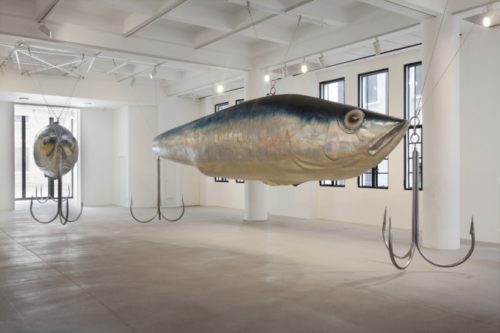
Huang Yong Ping
The establishment defensively dismissed this concern. For this is the quality of Western society since the Enlightenment, certainly, and no doubt earlier. Freud knew the enemy was within. The outward expression and projection of this enemy, as it were, does not alter the fact. It reinforces it. And memories, of course, can arouse effects that the original experience did not. We live always with a double temporality. This is the truth of the return of the repressed.
“Critics claim that the death drive defies evolutionary biology, therefore it must be bogus. But this criticism is merely begging the question of what we mean by death. And more specifically, what we mean by the function of death in psychic reality. To be even more precise, how death is organized as unconscious experience”.
Jon Mills
This sense of what I am calling morbidity in the West today is linked to ideas that Ferenczi, maybe more than anyone in that first generation, had about death and social/collective regression. Ferenczi influenced Reich a good deal, but his emphasis on pre-Oedipal experience, and this sense of the transcendental, again, ran far too in a mystical direction for Freud (or Ernest Jones, certainly)
“The child’s phase-appropriate developmental task requires nurturance,
love, tenderness, and affection from the parental caretakers.
This is the fundamental empathic and affectionate experience to which
all individuals are emotionally entitled. The narcissistic and unempathic
parent (or parental surrogate) expresses affection in the form of
passion. Passion is not tenderness; it is sexuality, even though the
parent tries to disguise the betrayal as tenderness. A narcissistic parent
intrudes the need for sexuality power, dominance, sadism, and so forth
onto the innocent longings of a child for love and tenderness. Sexuality
is not love, but aggression.”
Arnold Wm. Rachman

Gerald Leslie Brockhurst (1935 apprx).
Ferenczi saw seduction by a parent or family intimate as traumatic. His famous paper (Confusion of Tongues) details this primary trauma, one which includes an elaborate psychic or symbolic cast, and audience. The victim, the bystander, and the seducer or abuser. And the child of course, in his or her confusion, seeks to maintain warm and close relations with their abuser. This model, then, is useful (and I’m sure Reich must have read it) for social mapping — the bystander has a narcissistic investment in remaining silent. The key, in this formulation, is the narcissist parent. Callus and devoted to a manufacturing of narratives that promote their exceptionalism.
For Ferenczi though, there was a literal birth trauma that preceded all this. Where Freud saw this as symbolic, Ferenczi saw it as literal (and to some degree symbolic as well). That which comes before binding, before repetition, and representation — and hence recognition. That is the virtual site of the death instinct.
“…it {death drive} conveys the sense and the force of
something in human reality that resists discursive articulation as well as
political diplomacy, an otherness that haunts the dream of a common
world.”
Teresa de Lauretis
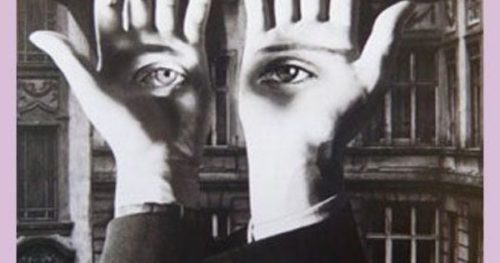
Raoul Hausmann
Freud himself wrote as a poet, often, even while insisting on the role of scientist. And this affinity for ambiguity, for shadowy formulations that are partly obscured or hidden, was natural for the human psyche. Again, this is a good part of what all culture means. I have a friend who is a successful screenwriter and TV writer. We worked together thirty years ago. He wrote me the other day as we discussed how bad Hollywood product has become. And he said, well, my theory is that the place is run by lawyers now. Everyone, he said, all producers, studio and network execs, were lawyers or ex lawyers. And he finished with ‘lawyers think writing is always a legal brief’. There is no metaphor or allegory in legal briefs. These guardians of mass culture are perfectly suited to erasing threatening content. Or as Zuckerberg had it, when announcing the fake news monitoring…*disputed content*. Can’t have that. Nothing that is not clear. Nothing that is even a tiny bit vulnerable to ambiguity or sub text. The narcissistic parent. The bystander and the abuser. Narcissism.

Mask of William Butler Yeats. (Simon Starling at Twilight, Yasuo Miichi).
Now without getting too deeply into the seduction theory ( both of Laplanche, and Lacan), the point has relevance to this idea of repetition and representation. Laplanche said in an interview:
“The problem is the reality of the other, and of his message. The reality of the other. Now this reality is absolutely bound to his strangeness. How does the human being, the baby, encounter this strangeness? It is in the fact that the messages he receives are enigmatic. His messages are enigmatic because those messages are strange to themselves. That is, if the other was not himself invaded by his own other, his internal other, that is, the unconscious, the messages wouldn’t be strange and enigmatic. So the problem of the other is strictly bound to the fact that the small human being has no unconscious, and he is confronted with messages invaded by the unconscious of the other. { } the small human being has to cope with this strangeness. And his way of coping with this strangeness is to build an ego.”
The strangeness of representation, really. All cultural production entails aspects of clinical engagement, especially transference. As Rob Weatherill said, the erotic haunts analysis. The silence, the formalities of couch, the payment, and rules against touching. All of this is repeated. It is a ritual that echoes binding and that long anterior non locational realm of pre Oedipal search. Artworks echo the same search, but look for release from the compulsions of repetition. And this is where the morbid factor enters. I look at the people in government; a John Bolton for example. Bolton is rich. By most anyone’s standards he’s rich. What is it that he can’t have? Clearly there is little he cannot buy. So it is authority. Power. But that word *power* is very vague. What is power? For power is more accurately described in some way that includes sadism and sexual self hatred. There are legions of stories about Bolton bullying his underlings. When you see photos of Bolton he is seems to be fighting off his urge to self destruct. He is the kind of bully who deeply wants to be punished himself. Now this is speculation. I don’t know Bolton. But why does he want to be the leader of massive destruction? What is it drives these people to hurt others? The sense of trauma is palpable. His own and others. Bolton was actually born modestly, the son of a Baltimore fireman. But he was driven, and went to Yale Law. His best pal was Clarence Thomas. He loved Reagan. But he loved force more. Nothing he has ever written suggests otherwise. On his side, he did describe the Clintons as arrogant even at Yale. So even a blind squirrel gathers some nuts. (and I don’t think Bolton will get the appointment anyway. He is the McGuffin this story).

Jules Olitsky
The sense that drives military men, defense contractors, Wall Street hedge fund mangers, or career professional liars like Samantha Power is connected to this structure of trauma. The society of the West, or the U.S. very clearly, is one in which narratives cannot be written that do not work overtime to neutralize their own meaning. I want to try to tie this together a bit here. Laplanche describes his idea of primal seduction. That the care and attention of the Mother is also unconsciously (or mostly) a source of erotic pleasure. Erotic in the broadest sense. The infant experiences this confusedly. But that confusion, that experience of this enigmatic mysterious message will then shadow the child later, and the adult later still. The parent (for the Father in this structure is his own enigma as a cast member of the drama Primal Scene) is not malicious. Nature is seducing the infant in a sense. And seduction is not an exact word here. Rob Weatherill says that this is essentially the infant born into a world of adult emotions. Of adult passions, Ferenczi would say. And these emotions and discourse are secret. The idea of repetition is being mediated by these secret codes.
“The world is seduction; the aporia persists, destined for repetition, or a compulsion for repetition.”
Rob Weatherill
The narratives of mass culture, the products of Hollywood for the most part, are increasingly both incomplete and oddly self hating. But they are structurally self hating; meaning the form and structure is repetitive to a pathological degree even as the tiny row boat of message is self congratulatory. That row boat is facing a tsunami of entrenched familiarity. This has rendered awards ceremonies as more and more pathetic. Look at the eyes of the celebrities on the red carpet. What do you see?
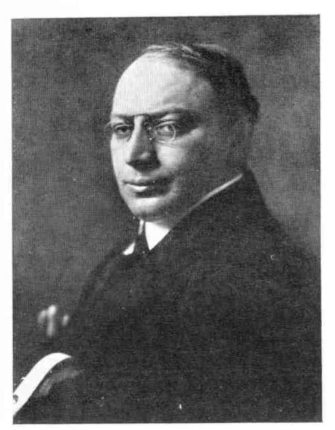
Sandor Ferenczi
I wanted to quote Weatherill again, on the therapeutic process of the post modern therapeutic culture.
“The effect has been to create a climate of suspicion and litigation. The attempt to eliminate the risk-enigma, or the unconscious, creates an ironic return via the
other of today, who is deemed to be abusing me. This makes current therapy trainings very cautious, efficient and repressive. Both therapists and students must be carefully screened. Consumers always want to know what they are “buying”. When they are buying therapy, it is the same as buying any other product. Will this product harm me? All guarantees must be put in place. The therapist is protected, by insurance, registration, the good name of the training institute or the professional association. The client knows that her therapist has been approved. However, this “transparency”, inspired by the scientific method, which can measure all the variable factors, forgets and ignores the radical otherness of the unconscious, namely, the untranslatable enigma of the erotic.”
Everyone is haunted by the secrets of primary trauma. And this touches on, directly, the instrumental element in all desire. Analysis has no real solution. And there cannot be one, and once that is accepted, that failure is not a failing, then the spectre of the erotic — the ghost presence lodged in that anterior space which is not a space — that will stop being a source of aggressive compensation. It is forever a radically Other of mystery and enigma, but the sadism of needing the wrong answers to the wrong questions will at least lessen.
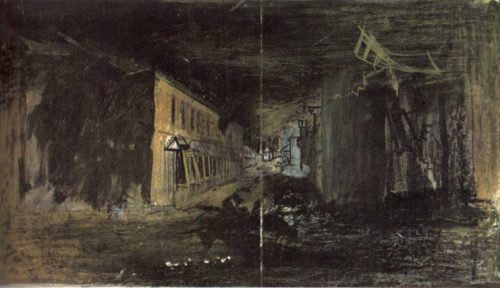
Graham Sutherland
The idea of solutions or resolutions is a very Western notion, and a post Enlightenment conceit. In analysis there are two paths (per Weatherill). The first is interpretive and directed toward a more defensible ego. The second is that of the post Lacanians and that is a deconstruction of meanings, a streaming of signifiers in a sort of proto free association. The second cannot really be workable without the first to play off. Christopher Bollas sees the mother, and her mysterious erotic caring as a first aesthetic experience. Bollas also notes that the analysis setting is one designed for the analysand to surrender. Or to submit. Weatherill writes here, on Bollas…
“Bollas notes that the primordial experience of transformation
remains a memory which will be re-enacted in the search for transformative
cultural experiences (seductions) “that promise total change””

William Orpen
Artworks and culture overall are in good part the search for submission and surrender. Erotic love is always tinged with surrender. And those that cannot, those who cannot receive love, are usually later reenacting revenge for their own rigidity. Revenge for lost possibilities. In the more American tradition of self help, of therapeutic culture, there is usually only the ‘good mother’. And this will be always haunted by the Laplanche (and Bion) ‘Id Mother’. But these good or safe therapies of the caring mother model still are couched in that adult language of control. The passions that are so mysterious to the pre-linguistic infant. That dreams are usually wish fulfillments does not preclude those traumatic dreams that work to resist fulfillment. The Capitalist system is a collective traumatic dream.
The experience of memories as if they were new is one that results in a validation of repetition, a compulsive irrational panic is established as a kind of authority.
“When repressed events take the form of “fresh experiences” rather than properly ascribing to them the reproduction of the past, reality is clouded with negativity, affective contagion, paranoiac phantasy, and subsequently, qualitative suffering.”
Jon Mills
The collective traumatic dream occludes perception, and in this era of the preeminence of screen life and mass media this clouding of reality is a reinforcing system of both confusing individual traumatic memories (repressed) with an increasingly unreal present where manufactured cultural production is mistaken for the Good Mother, and where the ghosts of that primordial search for Desire are met with a repurposed abuse. The system, the social, as a repetitive abuser. The collective as a kind of battered woman syndrome or Stockholm Syndrome, or variant of Munchausen’s. The symbolic return becomes a form of mental literal return to repeat the seduction but only as trauma.

Gerald Leslie Brockhurst. 1921.
Freud wrote of the ‘sexual research of children’. The instinct for knowledge, in other words. And I suspect this is more and more blunted in a society of pathologically narcissistic parents. And this can be seen in certain artworks that over time have taken on new meanings. Gerald Leslie Brockhurst was an early 20th century British portrait painter and etcher. He was close friends with Augustus John and became notable for the scandal of running off with his fifteen year old model (he was forty two). Brockhurst was always a minor figure, melodramatic to some degree, and an almost cinematic quality that borrowed from noir films and Sirk, both. He fell into a kind of tradition of symbolist colorizing and almost Pre-Raphaelite romanticizing. But today, his paintings, particularly those of his most famous model, feel disturbingly hallucinatory. And deeply unsettling for a kind of obsessive technique of meticulous detailing. There is also a kitsch Renaissance quality, too. To look at Stanley Spencer, today, an artist far more sophisticated and of far better taste (sic), one still feels a sort of repressed vision, a dullness almost. Perhaps out of that entire era of English realism only William Orpen (half a generation earlier, really), in a few works, approaches the perversity and freshness of Brockhurst. And it is the quality of seduction in Brockhurst that strikes one. It is highly ambivalent for one thing. Now I digress here because something important seems to be lurking in such reexaminations — in a time of selfies and indifferent and constant image production. The very idea of realistic has taken on new meanings. Brockhurst’s world, the gaze of his models, is a world that at least feels less narcissitic, and one in which surrender, on an individual level, is not only possible but almost inevitable.
“‘Perhaps’ the principal site of transference, “ordinary” transference, before, beyond or after analysis would be the multiple relation to the cultural’, to the ‘intrusive, stimulating and sexual’ messages that continuously invade the living human, renewing the traumatic aspect of the childhood enigma and sustaining the drive
to translate.”
Jean Laplanche

Mauricio Anzeri
The current state of U.S. culture is reflected in the hysteria of the educated class regarding the election of Trump. On one level this is like watching a textbook example of scapegoating (per Girard). The most disturbing aspect is that the hysteria is channeled (and originally manufactured) by the DNC and the Clintons. This is primarily the creating of propaganda that aims to demonize Putin and the Russian state. No thought is given at all, AT ALL, to the repercussions of nuclear war. Or even of a limited conflict with another global power. On Trump’s side there are repeated attacks on Iran and China. The U.S. state continues to build military bases that form a noose around China and Russia both. But those protestors on the street seem indifferent to this. What exactly is the fear of Trump? Certainly he is unpleasant and then there is the image of his eldest sons, figures of repulsion to be sure; but how much better, if at all, are the images of Clinton and Kaine? What drives these protests, really? For it is not rational in political terms. If one cites the LGBT community, then all one has to do is point out that Clinton has intimate ties to Saudi Arabia where gay people are beheaded. The narcissism is mostly white. Minority anxietyabout Trump is real, and partly justified, but only partly. Obama and the Democrats have done nothing to address police murder and violence. So the internalizing of that violence is like the enigma the infant can’t process. Why is nothing said? Hundreds of unarmed black men and women are brutalized and killed. Yet Obama speaks of fake news instead. Speaks of how small Russia is, and how he *knows* they hacked the election. Except that is all lies. This is a new register of violence, if we see it in the terms of our psychic economy. The missing statement. The missing judgement. And the missing representation of the ruling class. Meanwhile TV and film churn out ever emptier one dimensional narratives that also utterly ignore the people meant to pay money to see them.
“…the crime of the good film is the film itself, its time and
its performance – its performing of time. It is not by chance that
Apollinaire’s fascination with the new medium is immediately in
1907 the story of a murder, the relation of cinema and crime: film is
exactly a putting to death, the demonstration of ‘death at work’
(Cocteau’s ‘la mort au travail’).”
Stephen Heath
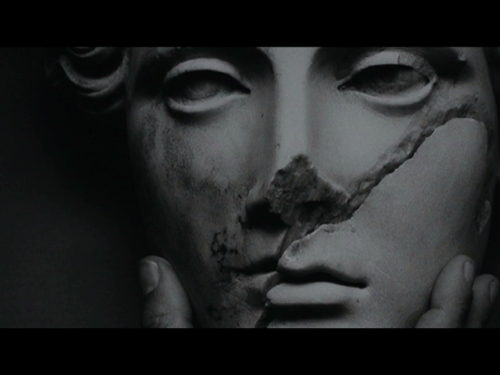
Mimmi Jodice
Great films have primal crimes. And there is something in what Heath, and earlier Cahiers du Cinema critics saw as a link between film and death. The film in which many of the actors are dead is now a routine experience. The social imaginary that is produced and reproduced, in never ending streams of image and voice, is one forced into the psychic space where reality once resided. And the focus, if not obsession, on identity, only masks the reality that nobody feels very certain what that is anymore. Time to read Musil’s novel again, perhaps. To look at film is to see how few films actually confront their own crimes (so to speak). In a corporate industry that manufactures mass images of violence, of sadism and destruction; it becomes apparent that all of this is to avoid the question of real violence. A film such as Sidney Lumet’s The Hill (1961) is actually a story OF violence. Tarantino is violence as a mask to avoid violence. Hollywood makes films of someone else’s violence, in a sense.
There is a growing sense of desire having migrated into this emotional hypochondria. The educated white class in the U.S. has reached a place where their aggression is, at least part of the time, directed inward — but by way of an outward projection. Their identity is the identity of an other; something of that original phantasmic absence that haunts our psychic construction is now the silently acknowledged scapegoat.

Matthias Olmeta, photography.
“For us today hypochondria is a state of over-anxiety about one’s health. Clinically, there is debate as to whether any distinct syndrome of hypochondria, or hypochondriasis, really exists, as to whether it cannot always be broken down into othersyndromes (so that it would never be adequate as a diagnosis in any particular case).”
Stephen Heath
The morbidity is an expression, too, simply, of the terminal phase of Capitalism. Humans not only ignore nuclear war, but they ignore whatever degree of crisis is represented by climate change. There is a kind of absence that permeates culture, now. Almost all things of relevance are missing. Everything from sub text to conscience to empathy to curiosity. Freud, with the Death Drive was searching for his own narrative of origins. The pseudo scientific anthropology of the era didn’t negate the insight of finding in self development an outward projection or deflection (per Mills) of libidinal urges. Adorno wrote that art today is, without exception, socially undesired. And he added that Freud had no adequate theory of expression. And this is really a not insignificant observation. Expression is an appearance that is measured by the reality principle it wishes to circumvent (Adorno). The propaganda of the establishment is today the inscription of unconscious narcissism and paranoia. It is wildly self interested to a degree that makes it almost illegible. But propaganda and marketing are not expression per se.
“[i]t’s as if the species has had enough of its own
definition and has thrown itself into an organic delirium”
Baudrillard
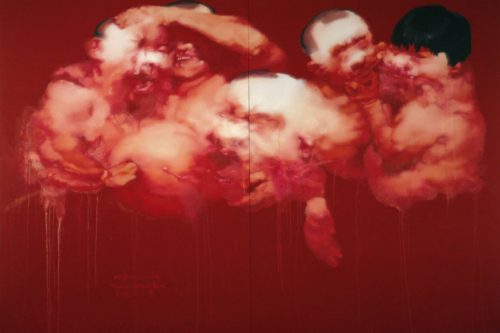
Yang Shaobin
Those who do voice opposition will increasingly pay a heavy price for doing so. The neurotic and petulant anger of the white bourgeoisie who stamp their feet over Trump’s election are validating Trump’s vision through this denunciation. As Adorno said, those who by renouncing instinct are remaining faithful to it. The much under-read Jon Mills, writes of Melanie Klein …
“In Klein’s (1932) first book, The Psycho-Analysis of Children, she makes her first reference to the death drive, which she takes over wholeheartedly from Freud.
Under the influence of Abraham’s views on orality, Klein becomes interested in the phenomena of infantile sadism, which she attributes to the tension between the polarity of the life and death instincts. It is specifically in the context of the early development of the origin of the superego where Klein annexes the death drive and makes it a key catalyst in the emerging process of the infant’s mental functioning. Klein sees the fusion of the dual drives to occur at birth, the destructive forces further emanating from within the infant and in response to unsatisfied libido, thus culminating in anxiety and rage, which only strengthens the sadistic impulses.”

Samel Bourne, photography. (Indian executioner, 1903).
In Obama, Clinton, and Trump, the U.S. has elevated three sociopaths who laugh at suffering. This is the culture of smiley face violence. Beware those who so readily want to wish you a Happy Holidays. The hundreds, now, of innocent men released from prison (some on death row) causes barely a ripple in the collective public. It is relegated to some corner of consciousness along with old TV shows and fashion nostalgia. Klein came to see that the objects of sadistic desire were also a source of anxiety. A source of fear. The executioner fears nothing so much as the one he or she must kill. The ruling elite fear the masses. The more sadistic their treatment of the underclass the more fear is generated. For the child, the ego must split, and destroy that which caused the fear and anxiety.
I will end with another quote from Mills, again about Melanie Klein…
“Klein radicalizes the presence of the death drive and anxiety in the embryonic mind. Death creates anxiety, thus leading to the developmental processes of schizoid, paranoiac, and depressive positions, later recaptured in awakening Oedipal tendencies, but first originating within the organism itself that are defensively deflected onto external objects. This process thereby becomes the andeleuvian cycle of projective identification: the entire architectonic function of psychic
maturation is predicated on the instantiation and transformation of death.”
Whatever one wants to make of the Oedipal theory, or whatever one wants to put in its place, the organization of our psychic development must start to *see* what is in front of us. And those who do see, and there are many, certainly, must accept the consequences and not shut their eyes. That enigmatic absence is always linked to death. For death is not anterior, it is not that to which we return, it is that to which we aspire. And perhaps that is the problem with all ideas of progress. To escape repetition is to escape the destructive component of desire, as it links to all symptom formation. And there is no escape. Therefore, escape becomes a concept that requires collectivity, not the artificial retreat into identity and isolation.

Hi John, I read this, and I find myself wondering (a) who would read this and (b) if they did, what is the purpose. This seems to me to be an intellectual doodling – perhaps serious (I am too “uneducated” to presume to judge) – to be read by a handful or maybe 100 persons, who will do their own such writing, perhaps, and…. And what? Run out and change the world? You bet. One of the reasons the world is as it is, a very very small reason, is because a tiny segment of people write such things (or make films or paintings or…) and as they do so, and tend to persuade themselves they’re having some positive (from their viewpoint) effect, they are actually doing almost nothing, except to themselves and perhaps a few friends, or people who know their “work” and think it impacts them. [I once in a while get letters from strangers who tell me how much my films affect them, and…. and I know it is virtually meaningless]. So I wonder, what do you think of what you write – what do you think it does and why do you think you bother? Curious.
@jon
I find your passive aggressiveness hasnt changed in forty years, almost. And I only bother to answer since many people do read this blog and i guess you might have to ask them why they do. Culture and politics intersect, and the loss of education cuts across this. It breeds a hostility to art even among those who have some pretence to being artists. And asking about purpose is perfectly in line with a kind of instrumental puritanism typical of americans. I m certain you imagine yourself atypical, but sadly, such comments betray a very typical demand for purpose and a hostility to intellectual matters. The fact that many more than a handful or mere hundreds read this and other theoretical work suggests its not a province of the ivory tower, but in fact something most everyone is capable of. Yours is a destructive and cynical attitude. And as adorno said, cynicism is just another mode of conformity.